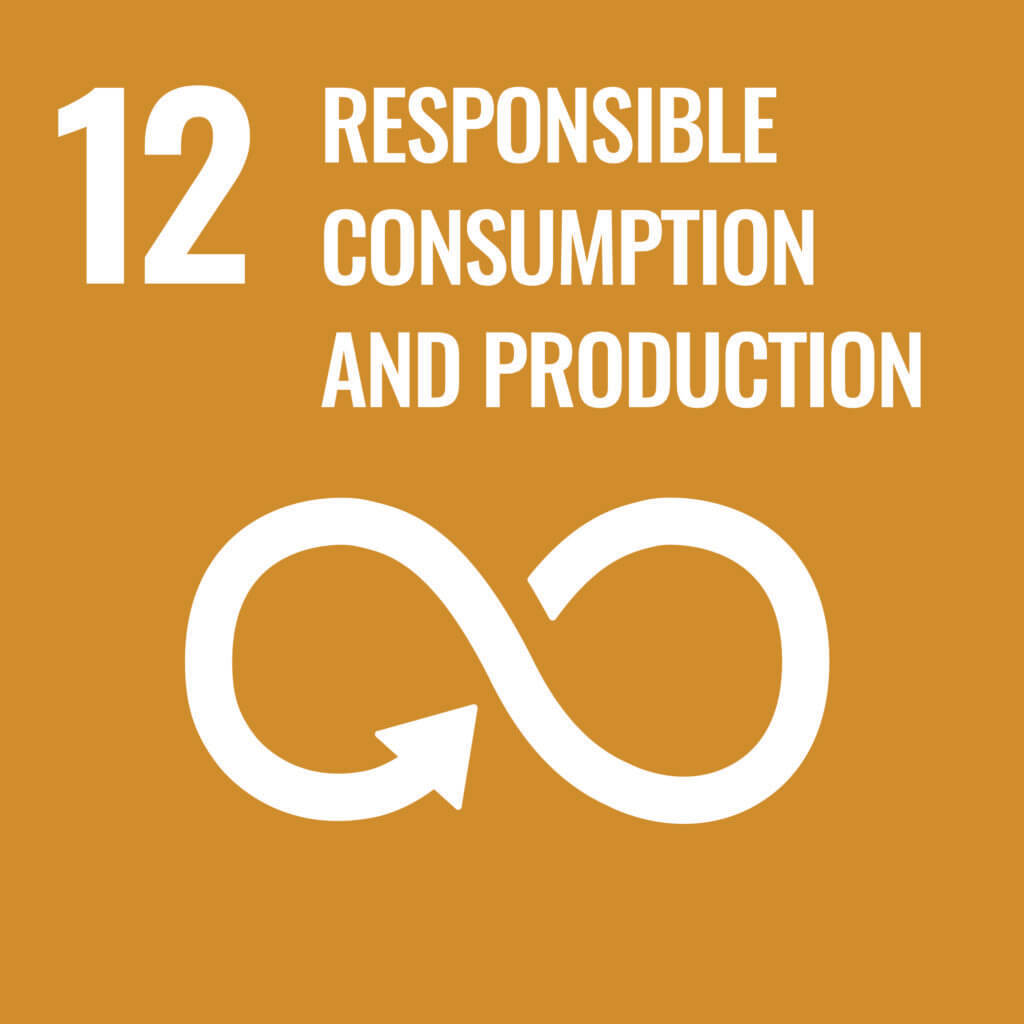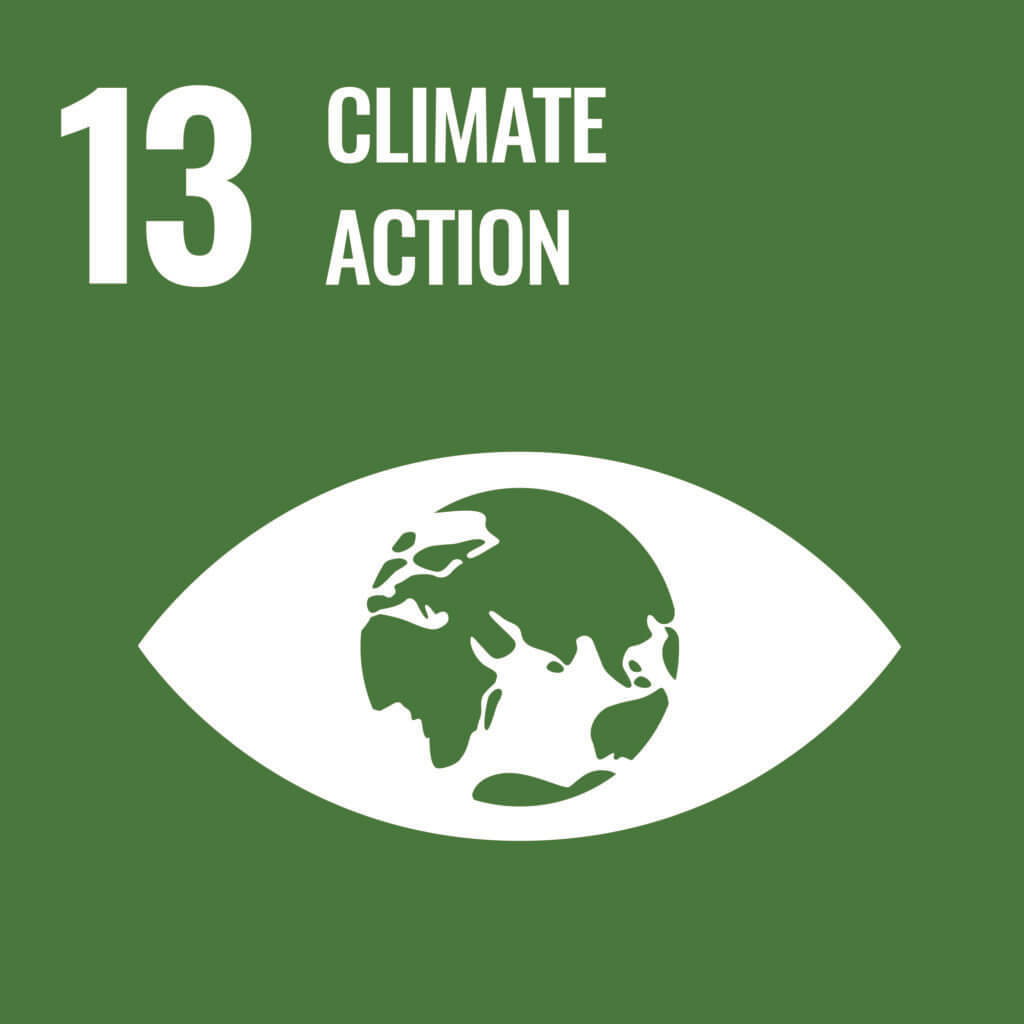Environmental footprint
Our sustainability focus areas:
Enabling products | Social handprint | Environmental footprint
Our aim is to reduce the negative impact of our own operations to the environment and climate.
Our contribution to the SDGs
Promote sustainable production and contribute to mitigating climate change through responsible operations based on circular economy, energy and material efficiencies, responsible use of chemicals, waste management and responsible supply chain management.


Key policies and standards
- Corporate values
- Code of Conduct, Supplier Code of Conduct
- Quality, Environment, Health & Safety Policy
- Chemical Policy
- ISO 14001/2015 (environmental management) and ISO 9001/2015 (quality management)
Energy efficiency and reduced emissions
Exel Composites’ greenhouse gas emissions from own operations are mostly carbon dioxide that is formed in own use of fuels, heating, and transportation of materials.
In addition to production, heating has a major impact on the total energy consumption as our largest production sites are situated in northern locations.
Our long-term target is to reduce greenhouse gas emissions (scope 1 and 2) according to UN established targets. The aim is to reduce our total use of energy proportional to production. The primary energy source is electrical energy, out of which approximately a third is estimated to be from renewable energy sources.
Circular economy and waste management
Recyclability and circular economy principles in our operations is one of the most pressing topics for Exel. Exel’s long-term target is to reach zero landfill.
The main operational efficiency goal for Exel Composites is to reduce operational or composite waste, which is inevitably generated as part of the regular production process. Exel has a waste management process in place and aims to continuously reduce the amount of waste produced. The amount is dependent on the product mix and is therefore volatile. As products are mostly developed on-demand and in close cooperation with customers, the use of raw materials is as efficient as possible. Factors such as product design and complexity, size of production batches and the quality of raw materials also contribute to the amount of surplus. Continuous dialogue with the customer in the early design stages and throughout production is therefore critical from a quality and production point of view as well as from a waste management perspective.
Exel is committed to preventing landfilling surplus materials from own production by recycling and/or reusing, for example, surplus resin mixes whenever possible.
Composite waste can be used as derived fuel in energy production. This is widely used in Central Europe. The composite waste that cannot be reused is recycled through combustion where possible. In this process, about a quarter is recycled as energy and the remaining ash is currently landfilled. Other than composite waste is recycled whenever possible.
Where logistically, technologically, and economically possible, composite waste goes to recycling for example in the production of cement. This is currently possible in some locations in Europe.
Water consumption
There are no material risks of leaking from factories. Producing composites is not a water intensive process.
Water is used mainly for sanitary purposes and to minor extent for cooling, where water is reused in a closed circuit.
Except for the manufacturing site in Joensuu, Finland, no Exel factory is in a groundwater area. According to the environmental permit, the company has built an extinguishing water recovery system in Joensuu to protect groundwater in the event of a factory fire. Also, the operations elsewhere in the Group are strictly governed by requirements of the environmental permits.
Sustainable supply chain
Exel Composites sources components and materials for its manufacturing processes from multiple sources and multiple countries. Most of the company’s supply chain is composed of large, international manufacturers or their distributors that often have established processes and high sustainability standards.
In addition, these suppliers and manufacturers are systematically audited by Exel as well as several other stakeholders. All Exel’s suppliers are chosen with care and based on objective factors such as quality, reliability, delivery, and price, in addition to ethical standards and sustainability. All suppliers receive the Supplier Code of Conduct as part of their agreement with Exel and they are required to operate in compliance with it.
Exel Composites conducts supplier audits primarily through factory visits where an initial self-assessment is verified. Exel conducts supplier audits also using self-assessment questionnaires. The audit topics include environmental, human rights, employee health and safety, and monitoring of dangerous particles, among others. Suppliers are selected for audit based on purchase volume, the criticality of the supplier as well as its location. In case of violations action is taken either to allow time for corrective action or to terminate the relationship.
As part of our circular economy initiative, Exel researches and evaluates the use of alternative, sustainable raw materials in production. These include bio-based resins and fibers, such as flax, as well as the combinations of virgin and recycled raw materials. Bio-based raw materials are part of our offering already today and they are used for example in some sporting goods. Interest towards them is expected to grow, but volumes are still small as bio-based raw material often comes with a premium price. The use of recycled fibers in pultrusion, on the other hand, is limited by the fact that the technology is precisely based on long, continuous fibers. When recycled, the fibers are usually cut or crushed short and therefore they are best used in other technologies, such as extrusion, where product properties are also different.
Climate-related risks and opportunities
RISKS |
OPPORTUNITIES |
Policy and legal
|
Products and services
|
Technological
|
Resource efficiency
|
Market and reputation
|
Markets
|
Physical risks
|
Climate-related risks and opportunities both could potentially have a significant financial impact on Exel Composites’ business and financial planning in terms of revenue gain or loss, unexpected expenditures, or investment requirements. Climate-related risks could also impact the valuation of Exel’s assets or ability to obtain financing. Strategically, climate-related risks and opportunities may potentially impact the company’s decisions regarding its geographical footprint, expanding into or focusing on certain product applications or customer industries as well as expanding into or focusing on certain production technologies.



